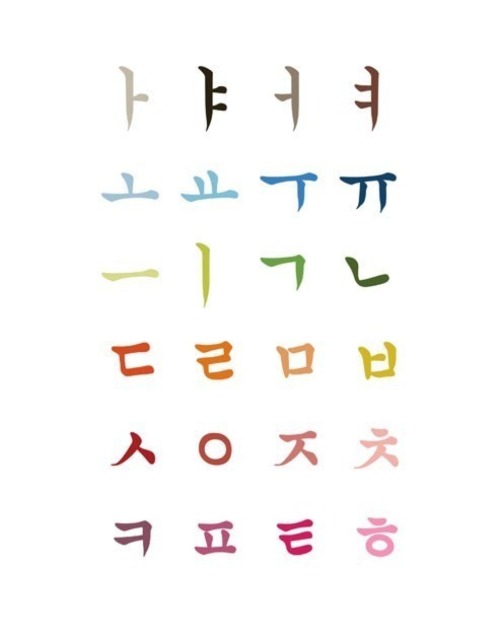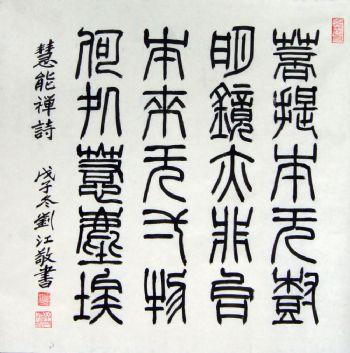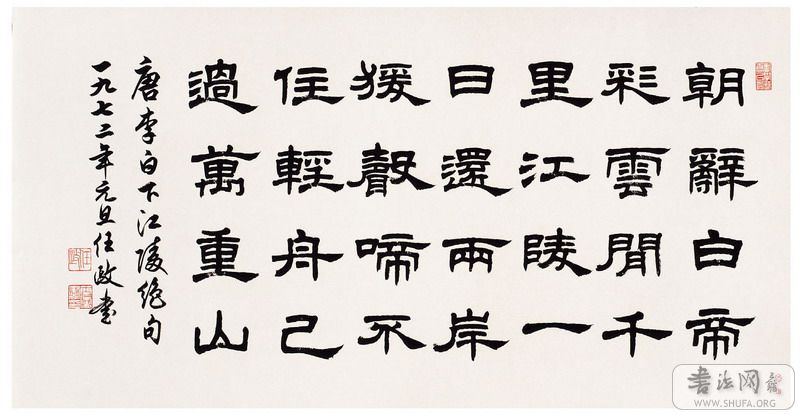Contents
1. Introduction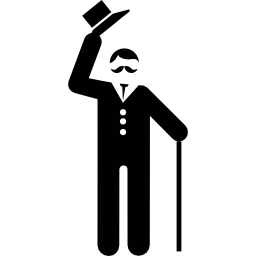
The emergence of writing systems is regarded as one of the most significant milestones towards human civilisation (Han, 2012). From primitive tool-making to modern-day technology, homo sapiens have come a long way to replace their stones and bricks with pen and paper, or even smartphones and tablets in recent decades. With at least 3,866 developed writing systems worldwide (Ethnologue, n.d.), it is believed that the invention of writing was the result of an improvement to an ancient system of tallies and labels, where things were depicted pictographically to reduce ambiguity and ease the process of recall (Fischer, 2007). While studies on language evolution have primarily focused their research on the various aspects of spoken language, this WikiChapter aims to uncover the humble beginnings of writing systems and how some of these systems have managed to flourish over the years, eventually developing functional and communicative purposes, whereas others have diminished and gradually became obsolete. The chapter is divided in three sections, detailing respectively the biological preconditions required for writing (covered in part 1), how early forms of writing systems evolved historically into characters that we use today (covered in part 2), and finally several challenges and limitations faced when documenting writing systems (covered in part 3).
History is impossible without the written word as one would lack context in which to interpret physical evidence from the ancient past. Writing records the lives of a people and so is the first necessary step in the written history of a culture or civilization.
1.1 What is a writing system?
A writing system is a conventionalised method of representing verbal communication visually, which is regarded as a reliable form of information storage and transfer (“Writing System”, n.d.). Although writing systems generally use both phonetic and semantic symbols in their characters, there are three main ways of classifying writing systems around the world (Elbow, 2012):
1. Alphabetic: composed of symbols called letters, which represent individual sounds (also known as phonemes) and have no meaning unless they are combined with other letters, e.g. English.
Korean consonants
2. Syllabic: comprised of symbols or letters that relate to the sounds or syllables of words, which carries more meaning than alphabetic letters, e.g. Korean – “밥” means rice (pronounced as “bap”).
Chinese characters for “Shanghai”
3. Logographic: consist of symbols or characters that carry the most meaning among the three writing systems, i.e. they represent entire concepts, but they do not map to single sounds (phonology), e.g. Mandarin Chinese.
1.2 Biological preconditions for writing
Even though speech relates directly to one’s biological predisposition whereas writing is an invented product of different cultures without any biological roots (Elbow, 2012), there are still certain prerequisites involved that are essential in making the skill of writing possible.

![]() BRAIN: Firstly, writing and speaking employ different parts of the brain to function. Although writing evolved from speaking, the two brain systems are so independent that one who lacks speaking a grammatically correct sentence aloud may be able to write it flawlessly. Very little is known about language and the brain, although we do know that most of the language processing functions are carried out in the cerebral cortex. Most comprehension of language and ability to communicate (spoken, written and signed) are processed in Wernicke’s area. However, what differentiates writing systems from other forms of communication in terms of brain function? Specific areas are unknown but abnormalities in visual-motor, linguistic, attentional and memory cognitive processes are shown to play a role in learning disorder cases of written expression.
BRAIN: Firstly, writing and speaking employ different parts of the brain to function. Although writing evolved from speaking, the two brain systems are so independent that one who lacks speaking a grammatically correct sentence aloud may be able to write it flawlessly. Very little is known about language and the brain, although we do know that most of the language processing functions are carried out in the cerebral cortex. Most comprehension of language and ability to communicate (spoken, written and signed) are processed in Wernicke’s area. However, what differentiates writing systems from other forms of communication in terms of brain function? Specific areas are unknown but abnormalities in visual-motor, linguistic, attentional and memory cognitive processes are shown to play a role in learning disorder cases of written expression.

![]() THUMB: Secondly, the human anatomy, in particular our hands and thumbs, had to evolve in order to write i.e. allowing us to have a strong grip and control over writing tools. As modern day humans evolved from primates that did not practise bipedalism initially, our early ancestors did not have any free hands to utilise as their four limbs were consistently planted to the ground for traveling, and hence writing was a skill that they could not learn to possess. After bipedalism gradually developed, the function of our hands began to diversify, and this allowed our ancestors to engage in tool-making. This activity required the use of a specialised thumb that is flexible, strong and precise enough to grip things between the palm and the other fingers. From then on, these evolutionary changes continue to provide modern day humans with an anatomical structure that is well-equipped with the necessary conditions (e.g. gripping a pen, controlling the length and shape of strokes) for writing to occur.
THUMB: Secondly, the human anatomy, in particular our hands and thumbs, had to evolve in order to write i.e. allowing us to have a strong grip and control over writing tools. As modern day humans evolved from primates that did not practise bipedalism initially, our early ancestors did not have any free hands to utilise as their four limbs were consistently planted to the ground for traveling, and hence writing was a skill that they could not learn to possess. After bipedalism gradually developed, the function of our hands began to diversify, and this allowed our ancestors to engage in tool-making. This activity required the use of a specialised thumb that is flexible, strong and precise enough to grip things between the palm and the other fingers. From then on, these evolutionary changes continue to provide modern day humans with an anatomical structure that is well-equipped with the necessary conditions (e.g. gripping a pen, controlling the length and shape of strokes) for writing to occur.
2. Origins and Evolution of Writing Systems
Have you ever wondered where writing comes from? Why did people in the past start writing? What exactly are the different ways to write?
Before writing systems were documented, it is possible that humans had a certain way of recording important information, as objects found from ancient times had marks that may have been used as a system of counting or a method of storing information. Researchers are still debating what the marks represent, but it is fairly certain that all writing systems had to go through a period of evolution before achieving the systematic and conventionalised forms that we know of today. Therefore, this section aims to explore the earliest traces of writing systems around the world, and how these systems undergo historic changes that allow them to remain relevant in the present era, or rendered them archaic in today’s linguistic landscape.
2.1 Cuneiforms
What are cuneiforms?

Cuneiform is a system of writing first developed by the ancient Sumerians of Mesopotamia c. 3500-3000 BCE. Mesopotamia is modern day Iraq and Kuwait and the first documented place in history where writing achieved widespread use. All of the great Mesopotamian civilizations such as the Sumerians, Akkadians, Babylonians, Elamites, Hatti, Hittites, Assyrians, Hurrians and others made use of cuneiform (Mark, 2011). The word ‘cuneiform’ comes from the Latin word cuneus for ‘wedge’ owing to the wedge-shaped style of writing.
It first began as a system of pictograms in the fourth millennium BC. A writing implement known as a stylus is pressed into soft clay to produce wedge-like impressions that represent pictographs (disconnected and fragmented drawings of fundamental objects and ideas) and phonograms (syllabic signs and symbols representing primary oral sounds). To understand how cuneiform works – one would pat the wet clay tablet, then press the stylus to it and start writing. After which, the clay tablet is put under the sun to dry and let it last. The pictograms and other symbols were usually used to represent trade goods and livestock. Overtime, people began to develop a numeral system to represent multiple instances of the same symbol rather than inscribing them all. Hence, these symbols became stylised and eventually evolved into a complete writing system (“Sumerian”, 1998)
Stylus

Example of cuneiform illustrating the distribution of barley
Scribes learning cuneiform:
Sumerians attended ‘Eduba’ which is the name of a scribal school, to train to be a Scribe. They learnt cuneiform by writing down proverbs and riddles that teachers gave them. Indeed, the Scribes played a vital role in society. Without them, letters would not have been written or read, royal monuments would not have been carved with cuneiform, and stories would have been told and then forgotten (Mesopotamia, 2015).
Evolution:
In the third millennium, the pictorial cuneiform became simplified and more abstract as the number of characters in use grew smaller. It is known as Hittite cuneiform and consists of a combination of logophonetic, consonantal alphabetic and syllabic signs (“Cuneiform script”, n.d). (Logophonetic refers to two major types of signs that denote morphemes and sounds. Consonantal alphabetic has no vowels written and syllabic signs are basic signs that contain a consonant and a vowel). The original Sumerian script was later adapted for the writing of a few languages such as the Akkadian (Old Assyrian language), Hittite and Urartian languages. Over time, this adaptation led to the development of Ugaritic alphabet and the Old Persian cuneiform, a semi-alphabetic cuneiform script.
Hittite cuneiform

Ugaritic alphabet

Old Persian cuneiform
Extinction:
Cuneiform was gradually replaced by the Phoenician alphabet when the Assyrian and Babylonian empires fell in the 7th and 6th centuries BC. By this time Aramaic was becoming the common language of the area, and the Phoenician script became widely used (Hollar, 2011). Also, by the second century CE, the cuneiform script had become extinct, and all knowledge of how to read it was lost until it began to be deciphered in the 19th century again (“Cuneiform script”, n.d). In other words, the reason for the disappearance of cuneiform was largely because it was a non-alphabetic way of writing. It could not compete successfully with the alphabetic systems being developed by the Phoenicians, Israelites, Greeks, and other peoples of the Mediterranean (Hollar, 2011). Cuneiform required a plethora of symbols to identify each and every word, hence, the writing was complex and limited to highly-trained scribes. The alphabetic systems were simple enough for people to learn and draw, making its use much more accessible and widespread (Schumm, 2014).
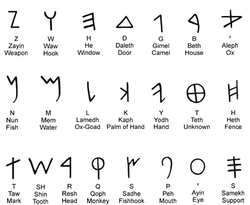
Phonetician alphabet
2.2 Hieroglyphs
What are hieroglyphs?

Have you ever wondered if the typical Egyptian symbols that you see in the movies or used on book covers and designs have any meaning to it? Or is it just for show? How long have they been around and what are they called? Is it an actual language? Well this section would answer your curious mind and hopefully shed some light on this topic. The symbols that are commonly seen on palace walls and ancient Egyptian monuments are called hieroglyphs. Hieroglyphs are characters used in a system of pictorial writing. The word hieroglyph came from the Greek hiero ‘holy’ glypho ‘writing’. In the ancient Egyptian language, hieroglyphs were called medu netjer, ‘the gods’ words’ as it was believed that writing was an invention of the gods. (Scoville 2015). It was believed that the hieroglyphs were given by an Egyptian god. Similar to most ancient scripts, there is poor understanding of the origin of the Egyptian hieroglyphs.

Although there are several claims about the origins, one of the more convincing view claims it derived from rock pictures produced by prehistoric hunting communities living in the desert west of the Nile especially during c. 3200 – 3000 BCE. (Mertz, 2009)
Cracking hieroglyphs:


For many years, hieroglyphs were not understood as no one could decipher the meaning behind the hieroglyphic symbols. It was believed that the symbols were just pictures representing objects and held no special phonetic meaning. It was until the Rosetta Stone, a decree of Ptolemy V (the fifth ruler of the Ptolemaic dynasty) of the same text written in ancient greek, demotic and hieroglyphic writing, was found (“Rosetta Stone”, n.d). There were a number of attempts made in deciphering the text on the Rosetta stone by scholars. Thomas Young was one of them close to deciphering it but he gave up midway because he had a sickness called biasedness! He couldn’t believe that hieroglyphs could be a syllabic language.

In the 1820s, his glory went to someone else called Jean-Francois Champollion, who continued Young’s work and unravelled the mystery when he identified the name of Ptolemy V written on the Rosetta Stone by comparing the hieroglyphs with the Greek translation. This revealed that the ancient Egyptian hieroglyphic writing was a syllabic language. Champollion’s accomplishment in deciphering the Rosetta Stone opened up the once kept secret of ancient Egyptian writing system and allowed the world to read into their rich history.
Evolution:



Egyptian writing evolved during its long history. Different versions of the hieroglyphic script were developed: hieratic and demotic. Hieratic allowed scribes to write quicker and less time-consuming compared to hieroglyphs. It was much more standardised and was used only for religious texts. (Scoville, 2015) Demotic script replaced hieratic while hieratic was used by priests up till the 3rd century AD. Coptic is the latest stage of the Egyptian language (Bard, 2015). During the Ptolemaic and Roman period in Egypt, the Greek and Roman culture became more influential and Christianity started to displace some of the traditional Egyptian cults, introducing coptic. Egyptians began writing in coptic alphabet to adapt the Greek alphabet, with several signs from demotic which represents Egyptian sounds that the Greek language did not have. Coptic was the first alphabetic script used for the Egyptian language and it is still used today.
Extinction?
Today, hieroglyphs, hieratic and demotic scripts are no longer in use. Coptic is not generally used in the contemporary world except by members of the Coptic Orthodox Church of Alexandria to write religious texts (Takla, n.d). So how do the Egyptians write today and what language do they use? Like most countries in the world today, there are a number of languages used in Egypt but the national language of modern Egypt is Egyptian Arabic which slowly replaced Coptic as the everyday language after the conquest of Muslim Arabs.
2.3 Chinese characters
What are Chinese characters?
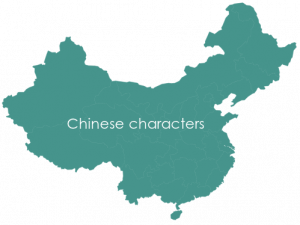
Chinese characters are also called ‘square forms’ or fangkuaizi (方块字) as their meaning is expressed using a combination of various strokes going in different directions within the two-dimensional space given in a square frame (Han, 2012). Interestingly, there are two writing systems present in modern day written Chinese. Firstly, the characters of traditional Chinese are standardised forms that trace back to the ancient Han dynasty, and are prevalent among countries such as Taiwan, Hong Kong and Macau today. Secondly, the characters of simplified Chinese were developed only in 1954 as an official script used in the People’s Republic of China, which has now been extended to other Chinese-speaking countries such as Malaysia and Singapore (Shei, 2014).

The birth of Chinese characters:
Examples of pictograms or xiangxingzi (象形字) in Chinese characters
Chinese is said to be the oldest writing system among the East Asian scripts, and is the only one to have arisen ex nihilo (out of nothing), as there is no evidence of any other fully developed writing systems in East Asia that could have influenced the formation of Chinese characters before it was discovered (Daniels & Bright, 1996). Furthermore, Chinese characters likely developed from pictograms or xiangxingzi (象形字), which are stylized illustrations depicting objects or actions, and eventually became ideograms that represent abstract ideas, often as a result of combining different characters to form new compound words (Dale, 2004).
Evolution:
In general, Chinese characters are believed to have gone through five major stages of changes in their physical shapes:
1. Oracle Bone Inscription, or jiaguwen (甲骨文): First appearing in north-central China (modern Anyang, Henan province) around 1200 BCE during the Shang dynasty, the earliest Chinese writing was found to be records of royal divinations that were in the forms of inscribed ox scapulas and turtle plastrons, which featured thin, rugged lines and long shapes with sharp edges (Daniels & Bright, 1996; Zhao & Baldauf, 2008).
2. Bronze Inscription, or jinwen (金文): By the Zhou dynasty (1066 BCE – 256 BCE), Chinese characters were inscribed on bronze vessels instead of bones for ceremonial and ancestral worship purposes, as writing on bronze allows for consistency in size, positioning and format of texts, resulting in a more rounded shape with thicker lines, simpler and smooth strokes, as well as achieving more symmetry overall (Chan, 2016; Zhao & Baldauf, 2008).
3. Seal Script, or zhuanshu (篆书): Towards the end of the Zhou dynasty and during the Qin dynasty (221 BCE – 206 BCE), the Qin empire managed to unify all of the states in China after a period of feudal wars, and the seal script was conferred as the official script in China to standardise orthographic instability and variation (Zhao & Baldauf, 2008). These Chinese characters were complicated, lengthened and curved, and were mainly used to inscribe names on seals, even though they were also written on bamboo strips, silk pieces, rocks and even precious stones (Chan, 2016).
4. Clerical Script, or lishu (隶书): Since the seal script proved to be very tedious to write, the clerical script was developed by local officials during the Han dynasty (206 BCE – CE 220), which had straighter and less number of strokes, combined with several modifications (e.g. different components were merged into one) to create a more simplified version of the seal script, in order to save time while copying large amounts of administrative documents. This gradually became accepted as the official way of formal writing, and is known to be the turning point between ancient Chinese script and modern day written Chinese, as the characters move away from the pictographic style to one that resembles the appearance of modern day Chinese characters (Chan, 2016).
5. Square Script, or kaishu (楷书): To further simplify the clerical script, the square script was eventually formalised during the Sui dynasty (581 – 618) and the Tang dynasty (618 – 960), which became easy for the layperson to master as it consists of few simple and abstract lines that conformed themselves within a square frame. This created utmost stability across users and learners of written Chinese, so much so that it has remained largely unchanged for a thousand years, until the reform of simplified Chinese in the 1950s (Zhao & Baldauf, 2008).
Rise of Chinese as a global language:
With a sizable land mass and home to the world’s largest population, China has faced many trials and tribulations in the past with its writing system, but has now achieved a stablised writing system that is widely used even among other Chinese speaking populations around the world. Spoken by approximately 1.35 billion people in mainland China alone, literacy rates are said to be at 84%, according to the 1990 census of China (Taylor & Taylor, 2014). From the information presented in the previous section, it can be postulated that modern Chinese characters are direct descendents of the Chinese script that was used back in the Shang dynasty, as their basic structural principles are fundamentally logographic even up till today, where one character represents a single syllabic morpheme (Daniels & Bright, 1996).
The success of written Chinese today could only be made possible by a scholar named Xu Shen, who compiled a lexicon of about 9500 characters (amongst them were 540 semantic classifiers) in “Explaining the unit characters and analysing the compound characters” or shuowenjiezi《说文解字》around 100 BCE, which was the first tangible step towards orthographic standardisation. Coupled with the combined efforts of scholars in the Qing dynasty, the Kangxi dictionary or kangxizidian《康熙字典》was commissioned in 1710 by the emperor, Kangxi, as the amount of Chinese characters present in that era grew so rapidly and had to be condensed into a definitive lexicon. As a result, this dictionary was completed in 1716, and contains over 47,000 characters, of which 214 of them were semantic classifiers, which is commonly known as radicals or bushou(部首)that are still in use today.
3. Challenges and Limitations
Compared to spoken languages, we can find physical evidence of ancient writing systems as they preserve (on materials such as stone tablets) and provide clues as to when our ancestors began writing. However, there are still a few challenges and limitations faced in the compilation of the origins and evolution of writing systems:
3.1 Difficulties in preserving physical evidence

![]() There are many artifacts of ancient scripts that are traceable to the period of time where it was inscribed, providing evidence of the use of writing systems from centuries ago. Specifically, the earliest ancient script that was found traced back to approximately 5000 years ago, but the question of whether writing systems developed before that remains unanswered. This is because despite the amount of evidence available, it is a challenge to trace back to the first writing system, simply because it may not have been recorded, or that those records may be lost due to a lack of preservation techniques and technology in the past (e.g. stone/clay tablets may be corroded due to harsh environmental conditions). Therefore, writing systems do leave behind some traces of evidence that shed light on the topic of language evolution, but it may be incomplete as it does not reveal the specifics of how and why writing systems were created.
There are many artifacts of ancient scripts that are traceable to the period of time where it was inscribed, providing evidence of the use of writing systems from centuries ago. Specifically, the earliest ancient script that was found traced back to approximately 5000 years ago, but the question of whether writing systems developed before that remains unanswered. This is because despite the amount of evidence available, it is a challenge to trace back to the first writing system, simply because it may not have been recorded, or that those records may be lost due to a lack of preservation techniques and technology in the past (e.g. stone/clay tablets may be corroded due to harsh environmental conditions). Therefore, writing systems do leave behind some traces of evidence that shed light on the topic of language evolution, but it may be incomplete as it does not reveal the specifics of how and why writing systems were created.
3.2 Inconsistency in research viewpoints

![]() Secondly, a bulk of research has been done on the evolution of spoken language. In comparison, there is significantly less research focused on the area of written expression, and hence it is challenging to deduce the origins and evolution of writing systems based on the limited pool of information. While gathering information from past studies related to this area of research, various sources provided different claims and views on the origins of the particular writing system. In addition, due to the nature of this research, it is difficult to have concrete stories and evidence of how people started writing ancient scripts or how it evolved from patterns of drawings into a written form, as all we have for reference are hypotheses and interpretations from different researchers.
Secondly, a bulk of research has been done on the evolution of spoken language. In comparison, there is significantly less research focused on the area of written expression, and hence it is challenging to deduce the origins and evolution of writing systems based on the limited pool of information. While gathering information from past studies related to this area of research, various sources provided different claims and views on the origins of the particular writing system. In addition, due to the nature of this research, it is difficult to have concrete stories and evidence of how people started writing ancient scripts or how it evolved from patterns of drawings into a written form, as all we have for reference are hypotheses and interpretations from different researchers.
4. Conclusion
In a nutshell, writing systems can be seen as part of the historic process of language evolution, as it provides humans with a mode of communication that can be documented and read to aid future referencing and visual recall, which is otherwise unachievable by speech. This specialised skill is only made possible given the necessary biological preconditions that are present in humans after millions of years of evolutionary changes. Since writing systems can be observed and is used frequently in our daily lives, it is a highly relevant research area that is worth studying as it provides us with valuable information that could possibly be applied to new writing systems among the generations to come.
Emoticons – 2000 ACD* (After Cognitive Disintegration) ![]()
From Mesopotamian cuneiforms to Egyptian hieroglyphs and Chinese characters, this WikiChapter has explored the origins of some of the world’s oldest writing systems, with the purpose of illustrating the evolutionary processes that are involved and how these systems extend to modern day writing systems around the world. Future research could look into the motivations behind the increased usage of emojis among the younger generations, as technology has proven to be more and more prevalent in our daily communication, and we rely heavily on the use of electronic devices such as smartphones and tablets. Interestingly, emojis are ideograms that relay emotions using facial expressions in the form of graphic symbols, and even have the function of communicating concepts and ideas such as the weather (Novak, Smailović, Sluban, & Mozetič, 2015), which parallels the origins of writing systems in a reverse fashion, since writing is said to derive from pictograms in the beginning.
5. Further Readings
For the most curious minds, here are some food for thought:
With the advancement of technology leading to innovative ways of communication i.e. emojis, many people are using these iconic signs to replace words on digital platforms such as social media and instant messaging applications. Words are, at times, not needed to communicate at all. On this note, are we actually progressing forward in the digital age, or have we gone back to the start by using pictograms again? Have emojis become the new writing system of the 21st century? While there are no definitive answers to these thought-provoking questions (yet!), we hope that the following links will continue to spark your curiosity on this topic:
- Alshenqeeti, H. (2016). Are emojis creating a new or old visual language for new generations? A socio-semiotic study. Advances in Language and Literary Studies, 7(6).
http://www.journals.aiac.org.au/index.php/alls/article/view/2823/2398
- Danesi, M. (2016). The semiotics of emoji: The rise of visual language in the age of the Internet. London: Bloomsbury Academic.
- Predictive system have been invented: Emojis replacing key words with relevant characters
- Will emoji become a new language?
http://www.bbc.com/future/story/20151012-will-emoji-become-a-new-language
- Will emojis bring about the death of written language?
http://www.cnbc.com/2015/06/24/emojis-the-death-of-the-written-language.html
6. References
Ancient Egypt, Hieroglyphics. (n.d.). Retrieved April 23, 2017, from http://history-world.org/hieroglyphics.htm
Bard, K. A. (2015). An introduction to the archaeology of Ancient Egypt. Chichester, West Sussex, U.K.: Wiley Blackwell.
Chan, S. (2016). The Routledge encyclopedia of the Chinese language. London: Routledge, Taylor & Francis Group.
Coptic Cairo (n.d.). Retrieved April 23, 2017, from http://www.coptic-cairo.com/
Cuneiform. (n.d.). Retrieved March 18, 2017, from http://history-world.org/cuneiform_writing.htm
Cuneiform script. (n.d.). In Wikipedia. Retrieved March 18, 2017, from https://en.wikipedia.org/wiki/Cuneiform_script
Dale, C. H. (2004). Chinese aesthetics and literature: A reader. Albany: State University of New York Press.
Daniels, P. T., & Bright, William. (1996). The world’s writing systems. New York: Oxford University Press.
Elbow, P. (2012). Vernacular eloquence: What speech can bring to writing. Oxford: Oxford University Press.
Ethnologue (n.d). How many languages in the world are unwritten? Retrieved March 16, 2017, from
https://www.ethnologue.com/enterprise-faq/how-many-languages-world-are-unwritten-0
Fischer, S. R. (2007). A history of language. London: Reaktion Books.
Han, J. (2012). Chinese characters. Cambridge: Cambridge University Press.
Hollar, S. (2011). Mesopotamia. New York: The Rosen Publishing Group.
Mark , J. J. (2011, April 28). Cuneiform. Retrieved March 18, 2017, from http://www.ancient.eu/cuneiform/
Mark, J. J. (2011, April 28). Writing. Retrieved April 23, 2017, from http://www.ancient.eu/writing/
Mertz, B. (2009). Temples, tombs and hieroglyphs: a popular history of Ancient Egypt. London: Brockhampton.
Novak, P. K., Smailović, J., Sluban, B., & Mozetič, I. (2015). Sentiment of Emojis. Plos One, 10(12).
Rosetta Stone. (n.d). In Wikipedia. Retrieved April 23, 2017, from https://en.wikipedia.org/wiki/Rosetta_Stone
Schumm, L. (2014, August 6). Who created the first alphabet? Retrieved April 23, 2017, from http://www.history.com/news/ask-history/who-created-the-first-alphabet
Scoville, P. (2015, July 2). Egyptian Hieroglyphs. Retrieved April 23, 2017, from http://www.ancient.eu/Egyptian_Hieroglyphs/
Shei, C. (2014). Understanding the Chinese language: A comprehensive linguistic introduction. London: Routledge.
Sumerian. (2017). Retrieved March 18, 2017, from http://www.omniglot.com/writing/sumerian.htm
Taylor, I., & Taylor, M. M. (2014). Writing and literacy in Chinese, Korean and Japanese. Amsterdam: John Benjamins Publishing Company.
Takla, H. N. (n.d.). Retrieved April 23, 2017, from http://www.coptic.org/language/stshenouda1.htm
The Lives of Scribes in Ancient Mesopotamia. (2015, June 26). Retrieved March 18, 2017, from https://allmesopotamia.wordpress.com/2015/06/26/the-lives-of-scribes-in-ancient-mesopotamia/
Writing system. (n.d.). In Wikipedia. Retrieved March 18, 2017, from https://en.wikipedia.org/wiki/Writing_system
Zhao, S., & Baldauf, R. B. (2008). Planning Chinese characters: Reaction, evolution or revolution? Dordrecht, Netherlands: Springer.



